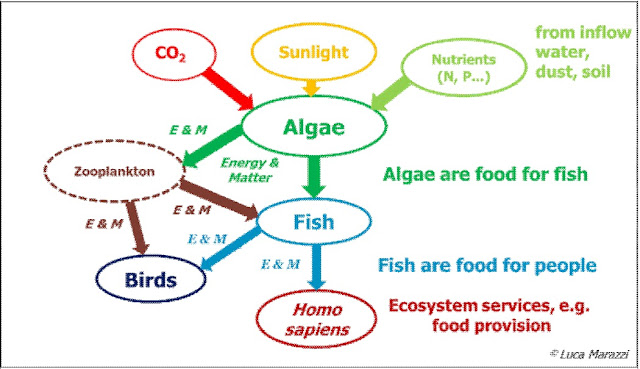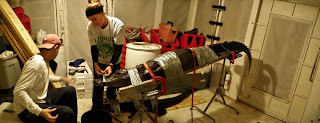All Scientists' Meeting 2018!
Science
is Collaboration
The
All Scientists' Meeting (ASM) took place at the Asilomar Conference Grounds in
Pacific Grove, California from Sept 30th to Oct 4th, 2018.
ASM is a triennial (every 3 years) gathering of all Long Term Ecological
Research (LTER) sites and is usually very well attended. Asilomar was idyllic: an
undulating shrubby terrain interspersed with pines, that raced towards the sea.
The weather: a cool and crisp autumn delight
- a nice escape from the humidity of the 305! Such was the weather that some attendees, including a professor from the FCE Fisheries division, could not resists a jog. The conference halls and meeting
rooms were furnished with wood and stone, and adorned with fireplaces…I could go on and on.
The theme of ASM 2018 - Next Generation Synthesis: Successes and strategies - brought together individuals involved in ecology and science outreach from the different sites of the LTER network. The goal was to reflect, evaluate, collaborate and deliberate on the future of the network, ecology and science. There are 28 LTER sites and they cover a vast range of ecosystems, from polar to tropical, terrestrial uplands to marine. It was fascinating to hear the interests and research of many attendees.
The
schedule for each meeting day comprised three sessions: an early plenary session,
workshops that ran from mid-morning to late afternoon, and evening events which
included poster sessions. Meals were scheduled between and within sessions and
they abounded in variety and quantity; each assortment, an almost divine
experience.
At the plenary sessions, designated speakers gave their descriptions of the LTER and offered personal insights into the benefits of being part of the network and the opportunities available to members. These include access to funds, trainings, reputable jobs, and collaborations with other networks which could open even more opportunities. One point kept resonating across all the plenary sessions: the importance of available and accessible long term ecological data. One example given was how long term data enabled the comparison between a human impacted lake and a climate-only impacted lake (a remote lake in Russia). A second example was how long term data aided the understanding of environmental surprises like hurricanes. Another point mentioned was the importance of grass-root integration and training (early-career scientists and graduate students) within the network.
The workshops, (almost a 100 of them!), were the crux of the meeting and provided opportunities for in-depth discussions and deliberations on all things ecological, scientific and didactic. The workshops had different sub-themes from observations to data analyses to model predictions and forecasts. There were training workshops, for example video production and documentation, student focused workshops, workshops on models and conflict resolution between empiricists and modelers, workshops on novel techniques in data analysis, (e.g, PRIME) and so on. These workshops created a stimulating atmosphere and were learning opportunities for both facilitators and attendees.
The evening events started off with poster sessions, with presenters showcasing their research. Numerous posters were available over 2 evenings, and just like the workshops, they reflected the diversity in ecological research across the LTER sites. The event that concluded the first day was the Idea Café, where presenters were told to pitch their ideas in 3 minutes or less. It was entertaining to see scientists and outreach personnel express creativity in their deliveries. One presenter dressed and addressed as a gold miner and drew an analogy to data-mining, another presenter started all her important words with the letter “D”, while another engaged the audience by stressing on the word “you” (while pointing at us). Basically, any tactic to make a definite impression was used and boy were we impressed.
One of the things that struck me was how publications came about from meetings such as ASM. These meetings are vehicles for the establishment of working groups across sites where participants can pool ideas, get funding, share data, gain better understanding, and develop techniques in answering old questions and investigating new ones. The result: papers, protocols and other forms of publications. Meetings like ASM are avenues for creating a consortium where students and early career scientist can be trained and the results organized into guidelines and yes, more publications. This becomes a wide-reaching solidified body of knowledge, that is, science.
A take home message from ASM 2018 is that in-house collaboration is imperative for the preservation and propagation of ecology and science, more so now that we are in treacherous times. Collaboration leads to funding. Collaboration leads to scientific inquisitions. Collaboration leads to publications. Collaboration has broader impacts. Collaboration results in informed management and better policies. Collaboration is science.
Photo
Speak




Photo credits FCE NCO, Mike Rugge, Cody Eggenberger, Ike Onwuka






















Comments
Post a Comment